29 Jan 24:
A gentle reader had questions for our friend Murray about stern shapes...boat sterns... Very good questions. We'll listen in on the conversation...
"Hi Murray,
I’m completely confused. Some of these boats (and ships) look they have two bows, but others seem to have two sterns. So I’ve looked up both “bow” and “stern” in Wikipedia, and my head is spinning with the dozen different kinds of each. The “bow” article explains that the shape has a purpose, namely, to enable the vessel to glide forward efficiently (hydrodynamically, I should say) in the water. The stern doesn’t seem to have a particular purpose that dictates its shape. It has to be designed in conjunction with the rudder, but, in general, it just has to end the boat. In that case, why not make it pointed like a bow? Or a flat transom, like a “regular” stern? Or shaped like a C? It can be anything. In fact, it’s amazing that its shape is so (relatively) consistent given that it could be anything. So I must be wrong. Does the shape of the stern figure into backing or docking? Maneuverability to avoid obstacles or enemy fire? The ship that amazes me in your pictures is the big old sailing ship with two flat ends, two sterns. How did such a vessel make any headway? Why would anyone build such a thing? But underneath the waterline (and just above it), the ship seems to have a pointed bow peeking out, so maybe it’s only the upper part of the ship that is a “rectangular building” sitting on a canoe shape or a rowboat shape. Do you have a favorite shape for sailing? (Is this a silly question? Are sailboats all the same shape?) Very interesting stuff! Teach me about sterns, please."
Murray responds...
I will make my comments, which may or may not be valid. A sharp bow will ride waves better than a flat splashy bow. A transom stern is easier to build than a sharp pointy stern and also allows more stowage room and shorter length of vessel. So a transom stern is more common. A shorter boat costs less to dock. When the builders went to the extreme in the 60's, I started calling them "Sawn-off 50 footers". I thought them ugly with reverse sloping sterns. By "shaped like a C" do you mean a rounded counter stern?
It must be easier to maneuver and dock without long overhangs fore and aft.
The whale sailing ship picture shows the blunt stern but the bow is obstructed from view. The bow though bluff, would be sharper than the stern. I am amazed that those old ships could sail to windward by tacking. But Admiral Lord Nelson apparently said HMS Victory was a good sailer. She is still preserved and looks an awful blunt ended floating fortress. She was sailed there and back to Cape Trafalgar so must have been capable.
How she sailed, I do not know but being long (186 ft), deep in the water (29 ft) and relatively narrow (52ft) must be the explanation. and the rudder is so small, I expect the sails were used to alter course. Her transom is clear of the water. Modern sailboats usually have width 1/3 of length.
As you say, it is the under water shape that matters. Waterline length is a determining factor for speed. Too much stuff above the waterline{ top-hamper} makes for difficulty going against the wind (windage). Victory was a battleship built to carry heavy canons to defeat invading fleets.
As for favourite shape, Usually a pretty boat sails better than an ugly one. I feel I can tell if a boat will sail well just by looking at it. And considering the heritage. However, that may be just my vanity.
I knew these would sail before I set foot in them
This one fooled me. Turned out to be... (edited: porcine in nature)
Shapes and fashions are constantly evolving. Now we are foiling and multihulls and reaching amazing speeds. Many years ago there was a notion that yachts should follow the form of a fish. They called it" Cod's head and Mackerell tail" I built a model C and M which sailed badly. Like others, I found that a sharp bow and an ample beam further aft sailed much better. Another fad was "Plank on edge", being narrow and deep.
GENESTA Plank on edge
1887 Yacht MERGANSER converted to houseboat
As for sterns, I like them clear of the waterline as they have less turbulence and drag. They can be vertical or slopeing transom stern, canoe stern, counter stern, elliptical stern. I think I know a pretty stern when I see one. ( and an ugly one, too)
Best regards, Murray"
Doug checks into the conversation with information on the Drascombe Lugger stern design:
"Hi Murray
"Hi Doug,
Having never sailed on a Drascombe, I am curious to know how the rudder, motor well and counter stern all fit together and work. Keeping feet dry is a great accomplishment. Tall wellies also help. How much was the design influenced by the Yorkshire Coble?"
The Uffa Fox Airborne Lifeboats were canoe stern with rudder in a trunk. In 1960's there were a few ABLs on the Tamar. Lovely boats!
Thanks and best wishes, Murray"
I wander by the conversation.
.jpg)


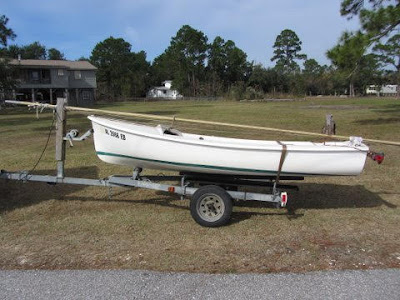


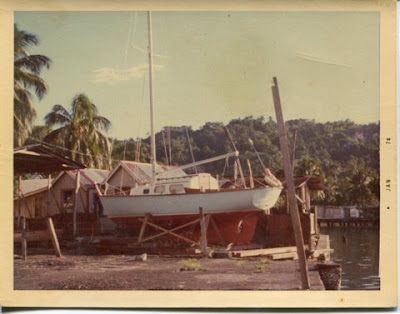
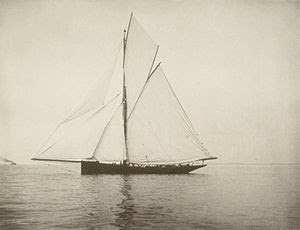


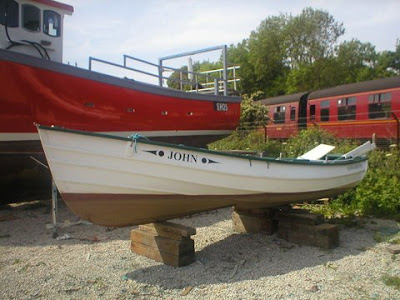
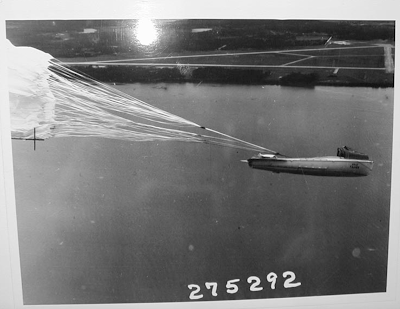
No comments:
Post a Comment